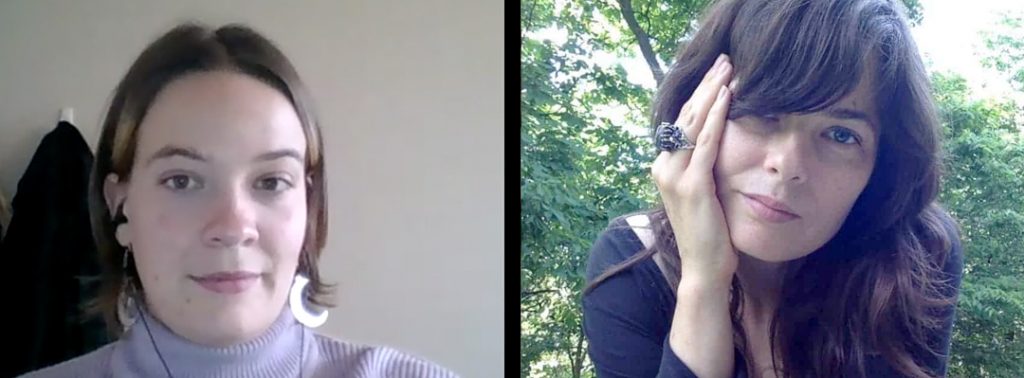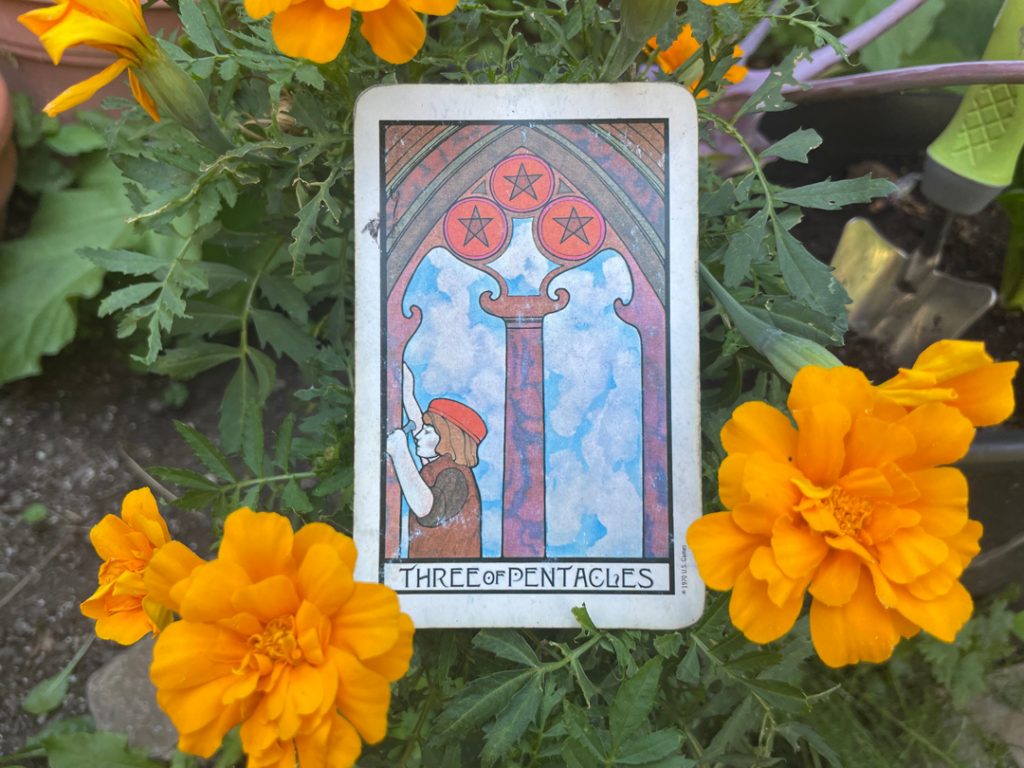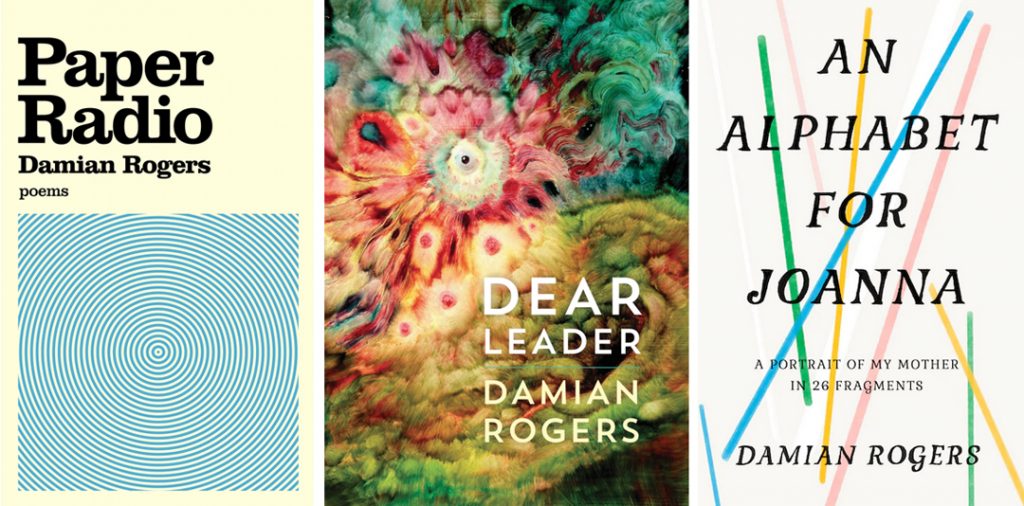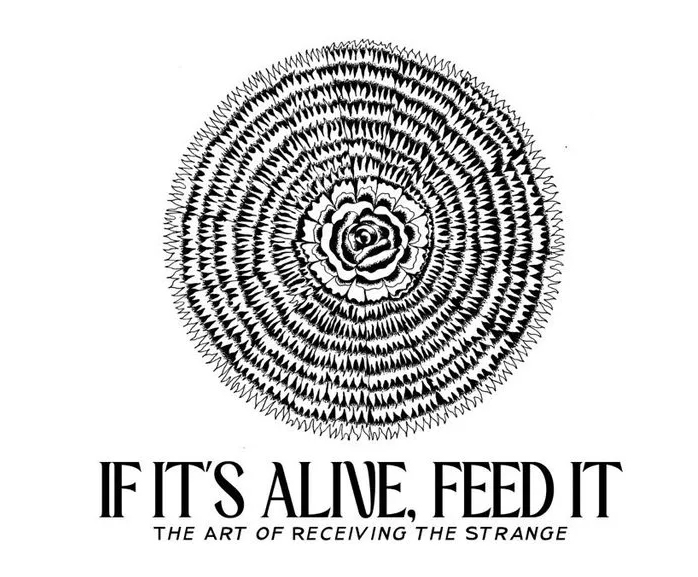Guest editor Taylor Brown sat down with Toronto’s Damian Rogers — a devoted poet, memoirist, tarot reader, teacher and visual artist. They talked about her private world of tarot made public and how stories can — but more importantly, should — consciously change with a simple card flip.

Interview conducted October, 2022
Hello Damian, thanks for meeting with me today! Can you introduce yourself and perhaps talk a little about your relationship to tarot?
I’m a writer. I still identify primarily as a poet, even though my last book was a memoir. I find I’m moving in the direction of long form prose projects. My editorial training is in poetry, my master’s degree is in poetry, my career has been in poetry. So that’s part of where that identity comes from. I also think that I’m trying to apply the things that drew me to poetry to other forms, to not just writing, but other forms of creative practice like tarot reading and teaching. I’ve also been moving into visual projects more. That’s the sort of animating intelligence behind any of my ideas, it seems to be growing out of what I still call poetry even if it doesn’t produce a poem.
What drew you to tarot initially? Was it poetry?
I have a strange relationship with the system, because my earliest memories are my mother having tarot cards out in her room and playing with them. I was very young when I started learning how to read them. My mother and I would read each other, and it was sort of a game, but there was also a sense of seriousness to it and so that sense of coming to it, or being attracted to it, isn’t really part of my story.
I didn’t grow up with the Rider Waite deck, for example, I came to those images later. I was used to the Marseille and the Aquarian, so it was just something that was in the background of my childhood.
I’ve always kept them close; they’re sort of a secret companion. It’s always been a part of my private life, my private practice, and this great intimate personal relationship with the images. It’s been very interesting being much more public about it in the last couple of years.


How has tarot, this secret companion of yours, influenced your writing?
I’ve certainly used them in writing workshops where I’ve talked about how you can use them as prompts to generate writing and for editing. I’ve written about them — they’ve worked their way into some of the poems I wrote about my mother. They show up in the writing, sometimes obviously, sometimes more subtly.
I have used them, sometimes in making choices, but not as often as you’d think. I talk to them back and forth all the time, but I don’t use them explicitly in my writing. It’s more like I use them in the background of everything all the time. But they have featured quite a bit in some of my creative friendships.
The newsletter — that’s the other really big way in which tarot has intersected with my writing practice. The pandemic was happening, and I wanted to feel connected. It seems like, I don’t know, if you have a book out you’re supposed to do something. I should have a newsletter, maybe that’s a thing I should do — but why? Like what am I going to write about, what’s the point of it? Really impulsively, I had the idea to write a response to every card in the deck. I didn’t know how much work it was going to be. It takes me a long time to write them, because it’s this whole process of going deep into different historical contexts of the cards, and thinking about the divergent points of view that different tarot writers have brought to them over the years.
I read across more than ten different books when I’m researching each card. I really like the book by Vicki Noble that expands upon her Motherpeace deck by Vicki Noble. It’s a very second-wave feminist approach to the cards, reclaiming the idea of the divine feminine and reaching back into this sort of mythic, prehistorical time. So I read that, and then I read Crowley, right, and he’s coming from a very different perspective. I like lining up disparate perspectives on the cards as I work through the newsletter.
There’s this tremendous fluidity of how we respond to these images, and how that changes culturally, how that changes historically, and how it changes from person to person. I find all of that a very rich territory; an imaginal, improvisational space, which is where things get interesting.
What can tarot teach us about the creative process?
I’ve been thinking recently about what is happening in a tarot reading — here are images that have fragments of narrative attached to them, while the order in which they appear, or which elements come forward, is left up to chance operation. As a reader, you have an audience of one, and it’s a performance of telling a story that is both improvisational, but also meaningfully connected to the images and somehow finding a new story that connects with the audience. I’m interested in how the cards provide the conditions for a kind of exchange.
These are all things that I bring to the way that I approach my writing. I have things I want to explore but I don’t like knowing where I’m going. Or sometimes I know where I essentially want to land, but I don’t know how to get there. I’ve never been really comfortable with the idea of executing a blueprint.
Do you have any cards that are resonating with you right now?
I pulled the Queen of Swords last night. That’s a card that has meant different things to me at different points in my life. I was wondering when it could come up. I’m going card by card and now I only have 15 cards left. It’s kind of like being alone in a room with 15 people you were going to see at some point, but you didn’t know when and now you don’t know who’s going to walk up to you next.
I did a reading earlier today, where the Ace of Cups came up, and that’s a card where I just immediately feel good. I feel fed and held. A part of my personality is always pivoted towards trying to find the path to healing. I do that in my writing in some ways, as much as I love to or need to go into dark, and difficult places, my nature is to try to pivot toward an opening or a sense of lightness. The Ace of Cups feels like a visual representation of that, like washing wounds, a spring bubbling up from the ground, a bottomless well. It’s not attached to a particular outcome. It’s not about “you’re successful, you won.” It’s about feeling so full of love that you can be generous with it.

Where can our readers support your work?
I have three books — two books of poetry and a memoir — that are out in the world.
I already mentioned my newsletter, it’s on Substack and is called If it’s Alive, Feed it; it is currently the vehicle through which I’ve been writing in response to the tarot cards. It’s free so it’s easy to subscribe to.

I’m teaching a workshop called Tarot and the Art of Receiving the Strange right now, and I intend to make an online version of it available in the future.
I’m working on my first art show, which will be at Wychwood Barns Gallery here in Toronto on December 16/17: I’ve been making prints in conversation with these lists that my mother made when she was initially diagnosed with dementia. She combined denial and bargaining in response to that diagnosis and was trying to memorize a list of 150 animal names to prove that she didn’t have dementia. I wrote about them in my memoir about my mother, but they weren’t done with me. I’ll also be reading from An Alphabet for Joanna that night for the first time in public since the book was published.


